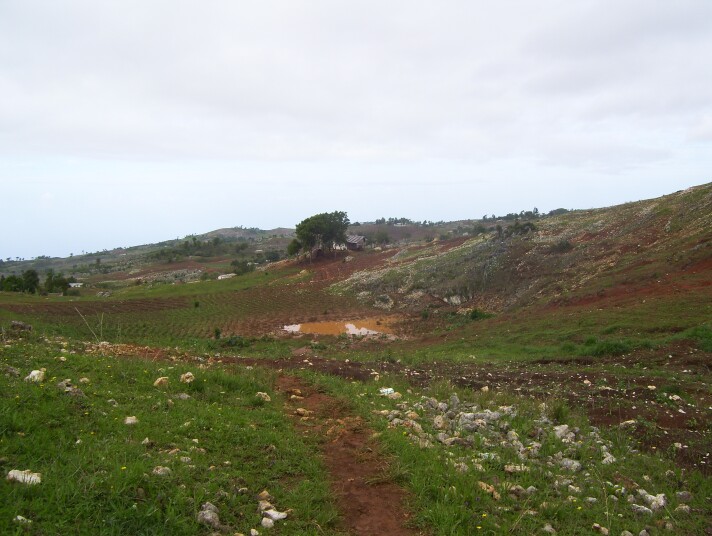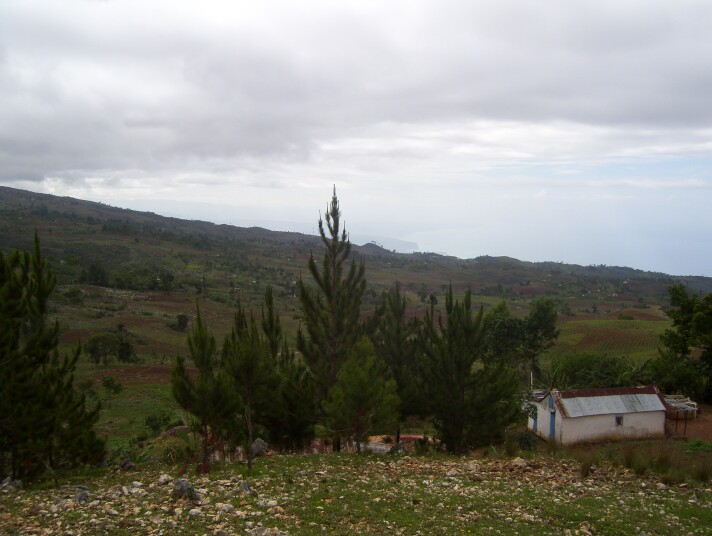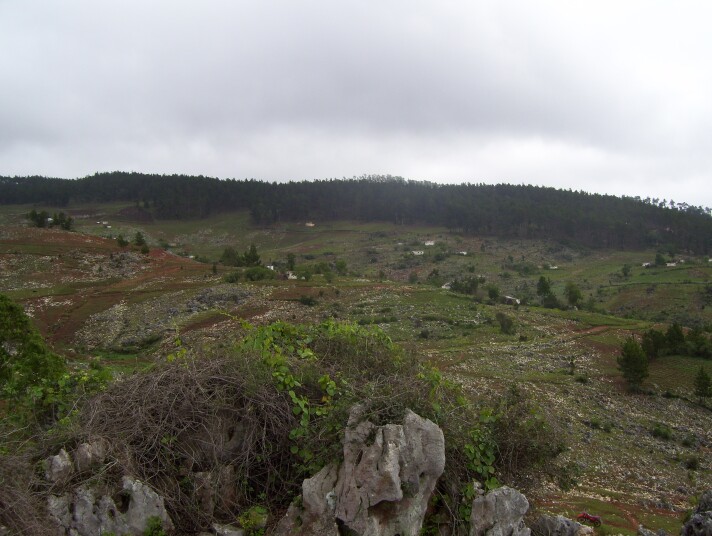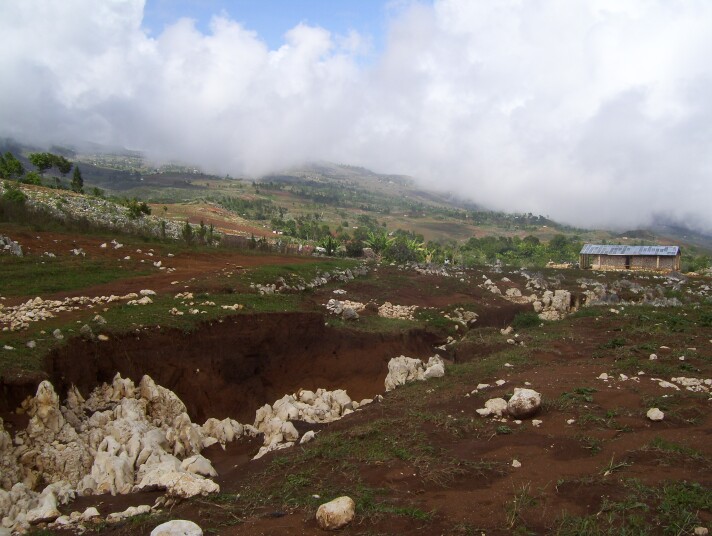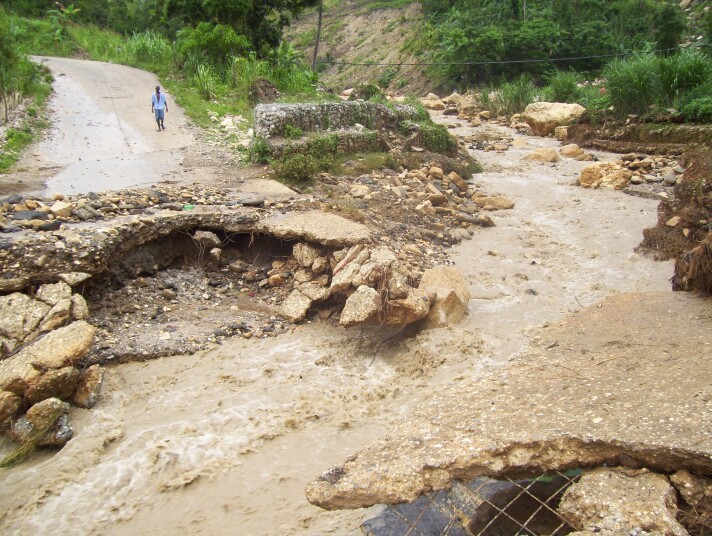Belwòch seems to bear its name like a joke, one in pretty poor taste. The name means “beautiful rock.” Until last year, Belwòch was a populous and fertile area along the river that separates Marigo from Peredo, its neighbor to the east. But when the hurricanes came, flood waters swept down the river towards the see. They carried rock upon rock with along with them, destroying everything in their path. They destroyed houses, uprooted even large trees, and washed away topsoil. Today, Belwòch is a field of large, white boulders. The topsoil, the trees, and the houses are, for the most part, gone.
But there are still people who live and try to make their living in Belwòch. And a handful of them belong to a Fonkoze credit center. It’s one of our oldest and most frustrating centers. It was established long before the office in Marigo was opened. Credit agents from Jacmel recruited its members.
Belwòch was never a large center. Jacmel chose to serve the area by opening a cluster of small centers rather than one central one. But Belwòch had five solidarity groups of five women each taking out new loans every six months, and they flourished.
But the repayment problems that started when global food prices began to spiral upward in the year leading up to the hurricanes became that much worse when the storms eliminated businesses and homes. Though Fonkoze offered interest-free loans to help its members rebuild their livelihoods, these loans were not enough for some women whose customers no longer had money to spend or whose families were facing health problems that drained the capital from their businesses. And these are just examples of the many kinds of problems our borrowers face.
So we’ve written off several Belwòch members, and lost some through simple attrition. Many of those who remain are having a hard time. They aren’t good about making their repayments, nor about attending their regular meetings. The center chief, the woman whom members have elected to approve their loans and facilitate their relationship with Fonkoze, is herself very delinquent in her repayments, and even though she recognizes that this makes it hard for her to speak seriously to delinquent members of her center, she just hasn’t been able to straighten herself out.
So when I attended their meeting a couple of weeks ago, I made a simple suggestion: We would just close the center. Women who are functioning well with their loans could join nearby centers. We would continue to follow-up with the others on an individual basis, helping them as best we can. I said I would return in two weeks so that we could discuss my proposition, and asked the handful of women who were present to encourage the others to be sure to be there for that disussion.
I had expected the meeting two weeks later to be a planning session. We would sit with each woman, and help her decide whether she really wanted to continue with credit and then help those who did choose a new center they could conveniently join. I had taken the center’s closing for written. I could not have been more wrong. The women made speech after speech insisting that no one was closing their credit center but them. They would not move to another center.
I was particularly struck by what Adeze had to say. She’s been a very reliable borrower. Her repayments have consistently been on time. She lives in downtown Marigo and pays car fare to attend her meeting twice each month in Belwòch. We have a center less than a block from her home, so I felt certain she’d be pleased to have the chance to pull out of a struggling center and join a more robust and convenient one. But it was not at all the case. She was willing to get her loans in another center if we had insisted, but her preference was to continue to go to the center that’s been hers.
The women feel ownership over the center, and though that hasn’t yet meant that they’ve worked together to solve their problems, it is a start. They agreed that, at their next meeting, they would work with their credit agent to create a calendar for home visits to all the members who owe money but don’t come to meetings. One or two of them would accompany the credit agent to each home. They would use the process to collect outstanding debt, but also to sift through the center’s membership to identify the core of women who are really committed to making it work. With that core, they would seek to make a new beginning.
We won’t know whether they are really able to make a go of it for a couple of months. I told them I would track October and November meeting attendance closely. I’ll also be looking for the results of their homes visits. But if we can help them make this center work, it would give us one more nearby post as an anchor for our programs as we seek to reestablish this office on truly solid ground.

